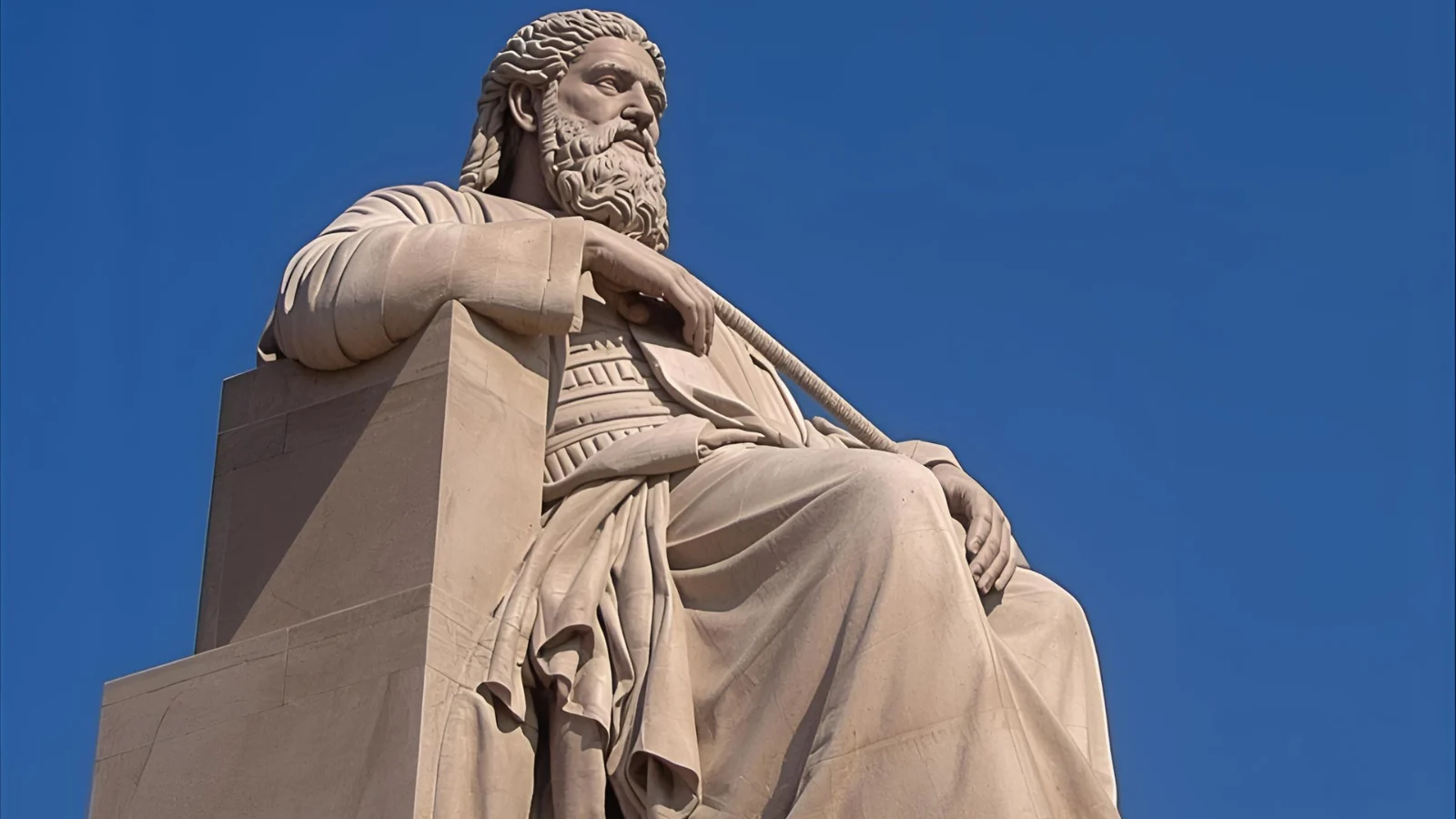✨ Introduction: The Dream That Shook a King
In the Book of Daniel, King Nebuchadnezzar of Babylon had a dream so vivid, so powerful, that it disturbed his spirit and robbed him of sleep. In his vision, he saw a towering statue made of different materials—its head of gold, chest of silver, belly of bronze, legs of iron, and feet partly of iron and partly of clay. No ordinary dream, this vision became one of the most mysterious and widely interpreted dreams in human history.
But what does the Nebuchadnezzar dream statue meaning represent today? Beyond the biblical narrative, the statue is a symbol of power, fragility, transformation, and human destiny. From ancient anthropology to modern psychology, from spiritual teachings to tattoo symbolism, this statue carries layers of meaning that still echo in our personal and collective journeys.
Let’s explore the statue’s significance in depth—historically, spiritually, psychologically, and symbolically—to uncover how this dream can guide us even in modern times.
🏺 Historical & Anthropological Background
Nebuchadnezzar’s dream is first recorded in the Book of Daniel, chapter 2, written around the 2nd century BCE. The statue was interpreted by Daniel as a vision of successive empires:
- Head of Gold – Babylonian Empire
- Chest of Silver – Medo-Persian Empire
- Belly of Bronze – Greek Empire
- Legs of Iron – Roman Empire
- Feet of Iron & Clay – Divided kingdoms of later times
From an anthropological perspective, the statue represents how ancient cultures used symbols, metals, and mythic imagery to explain cycles of history. Across civilizations, from Mesopotamia to Egypt, colossal statues stood as metaphors for strength and impermanence.
The spread of this story across Jewish, Christian, and Islamic traditions shows how one dream could transcend religion and geography, shaping cultural consciousness for centuries.
🧠 Psychological & Healing Interpretations
Carl Jung, the Swiss psychologist, believed dreams were messages from the unconscious, guiding us toward wholeness. Interpreted psychologically, Nebuchadnezzar’s statue can symbolize the layers of the human psyche:
- Head of Gold – Higher consciousness, intellect, or ego’s pride
- Chest of Silver – Emotional wisdom, compassion, the “heart space”
- Belly of Bronze – Willpower, ambition, physical vitality
- Legs of Iron – Strength, endurance, rigid beliefs
- Feet of Clay/Iron – Vulnerabilities, suppressed fears, instability
The dream reveals that even the strongest structures (empires or personal identities) rest on fragile foundations. Healing, in this context, comes when we recognize our vulnerabilities, rather than denying them.
Modern psychology also uses this dream as a metaphor for burnout, fragile success, and the illusion of invincibility—a reminder that resilience must be built from within, not just from external appearances.
🙏 Spiritual & Religious Perspectives
📖 Biblical Interpretation
In Christian theology, the statue is seen as prophecy—a timeline of human empires before the arrival of God’s eternal kingdom, symbolized by the stone that destroys the statue.
🌍 Cross-Cultural Views
- Native Spirituality – Large figures or statues often represent ancestral guidance, spirits of protection, and lessons about balance.
- Modern Spirituality – Many see the statue as a symbol of ego vs. soul, where material success eventually collapses without spiritual grounding.
- Islamic Tradition – The dream is acknowledged as part of prophetic literature, emphasizing divine control over human kingdoms.
At its core, the statue is a reminder of impermanence: no matter how powerful one becomes, only spiritual truth endures.
💎 Deeper Symbolism: Strength, Fragility & Inner Healing
The Nebuchadnezzar dream statue meaning extends beyond prophecy—it mirrors our inner lives.
- Strength: The iron legs show resilience, willpower, and the drive to stand firm.
- Fragility: The clay feet remind us that even the strongest appear unbreakable until pressure reveals hidden weaknesses.
- Transformation: Each metal shift represents phases of growth and decline, just like seasons in our personal journey.
- Inner Healing: The statue teaches us to acknowledge our weaknesses not as failures, but as opportunities for self-discovery and healing.
🚹🚺 Gender-Based Meanings
When applied to personal symbolism, even as tattoos or meditative imagery, the statue takes on gendered dimensions:
- Masculine Meaning: Represents ambition, power, leadership, rational control—but warns of pride and ego collapse.
- Feminine Meaning: Symbolizes wisdom, intuition, the cycles of growth and decay, and the hidden power of vulnerability.
Together, these interpretations show the balance of masculine and feminine energies—strength without compassion leads to downfall, while vulnerability without resilience leads to fragility.
📍 Placement & Body Location Meanings
For those drawn to the statue as tattoo symbolism, placement enhances meaning:
- Hand/Forearm – Power in action, destiny shaping one’s future.
- Chest – Protection of the heart, pride, and resilience.
- Back – Carrying history, responsibility, and ancestral strength.
- Thigh/Leg – Endurance, life journey, moving forward despite fragility.
- Neck/Shoulder – Balance between thought (head of gold) and action (legs of iron).
🎨 Design & Color Symbolism
Just as metals had symbolic weight, modern color and design choices expand meaning:
- Gold – Wisdom, enlightenment, divine authority.
- Silver – Purity, reflection, emotional clarity.
- Bronze – Passion, drive, energy.
- Iron – Power, discipline, resilience.
- Clay (earth tones) – Humility, grounding, fragility.
- Blue – Peace, spiritual awakening.
- Red – Passion, ambition, pride.
- Black/Grey – Mystery, resilience, acceptance of impermanence.
⚖️ Cultural Debate: Respect vs. Appropriation
One cannot explore statue symbolism without addressing cultural sensitivity. The Nebuchadnezzar statue is rooted in Judeo-Christian prophetic tradition, yet its influence now crosses cultures and artistic forms.
- Respectful Use: Studying the statue as prophecy, art, or psychology while acknowledging its sacred origin.
- Appropriation Risk: Using the statue purely as decoration or tattoo without understanding its spiritual weight can be seen as disrespectful.
When adopting such imagery, awareness and respect for its cultural and religious origins is essential.
📖 Real-Life Stories & Examples
- A historian’s reflection: One scholar shared how studying the dream statue inspired him to see history not as a linear path, but as cycles of rise and fall.
- A tattoo artist’s client: A young man chose the feet of clay as a tattoo reminder of his recovery journey, symbolizing that vulnerability was not weakness but strength.
- A modern spiritual seeker: A woman meditated on the statue during a life crisis and realized she was “living on clay feet”—a moment that led her to therapy and spiritual grounding.
These stories show that the statue’s symbolism is alive today, reshaping lives through insight and reflection.
❓ FAQs on Nebuchadnezzar Dream Statue Meaning
Q1: What does the Nebuchadnezzar dream statue represent?
It symbolizes successive empires in biblical prophecy, but also represents human pride, fragility, and the cycle of power and downfall.
Q2: Why were different metals used in the statue?
Each metal reflects a different kingdom’s character—gold for Babylon’s wealth, silver for Persia’s strength, bronze for Greece’s expansion, and iron for Rome’s might.
Q3: What is the meaning of the feet of clay?
It represents weakness at the foundation—despite external strength, hidden vulnerabilities can cause collapse.
Q4: Can the statue be used as personal symbolism?
Yes, many use it as a metaphor for resilience, humility, and spiritual awakening—or even as a tattoo symbol.
Q5: Is the statue only a Christian symbol?
No, while rooted in biblical tradition, its themes resonate across psychology, spirituality, and cultural studies.
🌅 Conclusion: Lessons from a Statue of Dreams
Nebuchadnezzar’s dream statue is more than a relic of ancient prophecy—it is a mirror of the human condition. Whether seen through history, psychology, or spirituality, the statue tells us:
- Strength is real, but fragility is inevitable.
- Success without humility leads to collapse.
- Vulnerability is not weakness—it is the doorway to resilience.
In today’s world, where many build lives on “feet of clay,” this statue calls us to balance ambition with wisdom, power with compassion, and pride with humility. Like the king who trembled before his dream, we too are invited to listen—to see not only what will fall but also what can rise anew.


